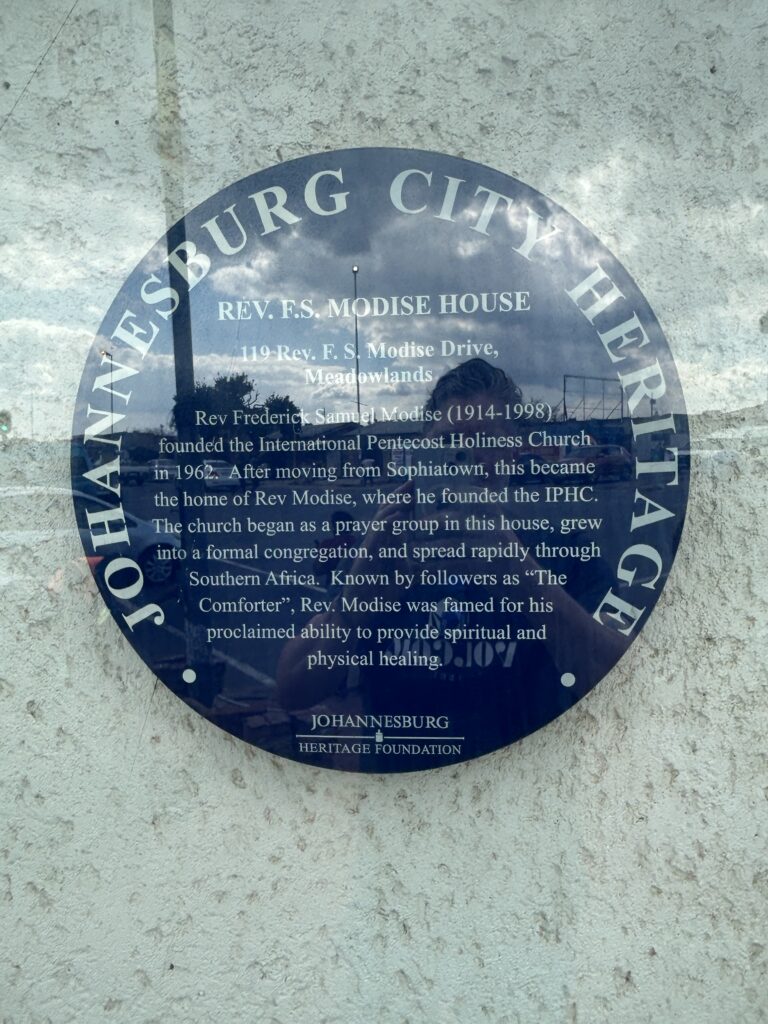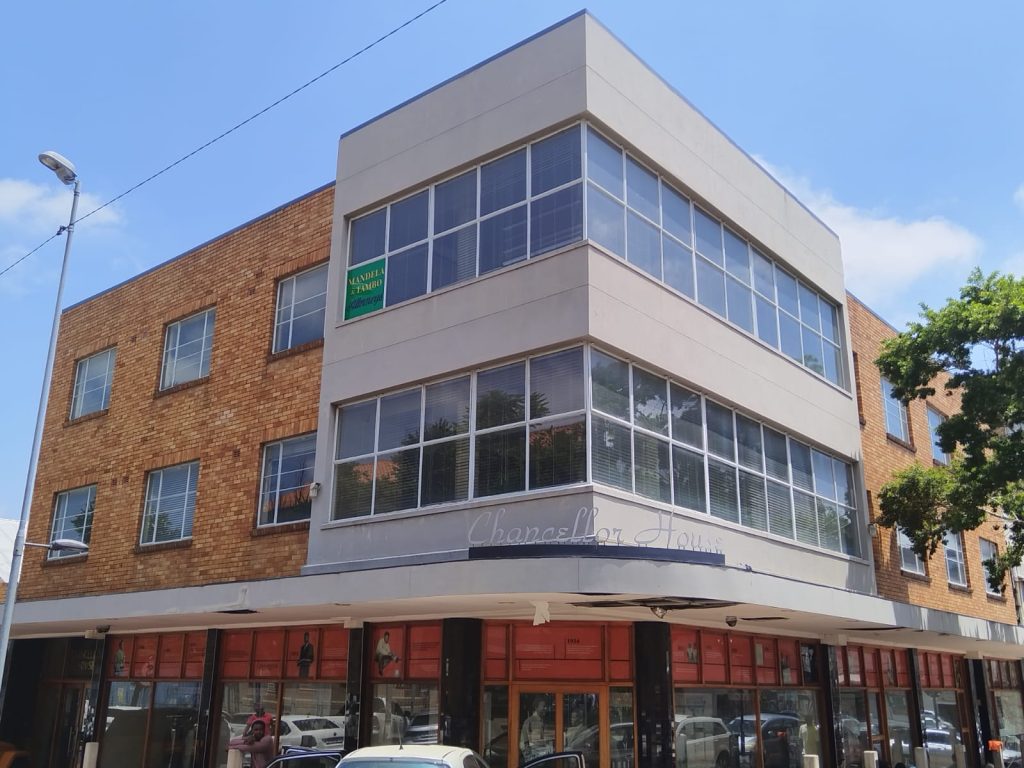The Rev Frederick Samuel Modise house, adorned in the colors of the International Pentecostal Holiness Church (IPHC), prominently stands on Reverend Frederick S. Modise Street. Originally a four-room “matchbox house,” it was expanded in the 80s with two additional rooms and painted white with red accents. Attached to the main modern house is a double-storey building featuring two parking garages.
Beginning in 1955, during the forced removals carried out by apartheid police, families from Sophiatown were uprooted and relocated to Meadowlands and other segregated townships. During this tumultuous period, the house was used as a reception office managed by the Native Resettlement Board. Upon arrival at this location, the displaced residents were provided with a pint of milk and two loaves of bread as a small gesture of sustenance before being directed to their new homes. The relocation process was strictly organized, with families who had been part of the multi-cultural community of Sophiatown being split up into separate tribal and ethnic categories. People were assigned to different zones within Meadowlands based on their ethnic backgrounds. Consequently, communities were divided into separate zones for Zulu, Tswana, Sotho, and Tsonga peoples.
In the years that followed, this notable building transitioned from its role as a resettlement office to becoming the home of Reverend Frederick Modise. Reverend Modise, the founder of one of the largest and most rapidly growing African Indigenous churches, brought a new significance to the house with his residence. Thus, the house, once a symbol of displacement and segregation, evolved into a landmark associated with the spiritual leadership of Reverend Modise.
Born in 1914 in the small village of Rooiberg, near Bela-Bela in Limpopo province, Modise's early life was characterized by poverty and hardship, which shaped his empathetic approach to ministry. His journey from a labourer to a revered religious leader is a testament to the transformative power of faith and charismatic leadership.
Modise's early years were marked by struggle. He worked in various low-paying jobs, including as a miner, experiencing firsthand the harsh conditions faced by the working class. He became a ZCC Minister in meadowlands, a carpenter, and one of the richest undertakers in the area.
In 1962, a severe illness led to a transformative spiritual experience for Modise. While bedridden, he reported having a vision in which he was visited by God, who revealed to him his divine calling. After he was admitted to Coronationville Hospital on 12 September 1962 at midnight a voice told him to pray. This vision was the genesis of the International Pentecostal Holiness Church, as Modise felt compelled to spread the message of divine healing and salvation.
Following his spiritual awakening, Modise founded the IPHC and began his ministry in Meadowlands, Soweto. His reputation as a healer and prophet quickly spread, drawing many followers seeking both spiritual solace and physical healing. Modise’s charismatic leadership and emphasis on Pentecostal worship practices, including speaking in tongues, prophecy, and miraculous healings, resonated deeply with people, leading to rapid expansion of the church.
The church’s headquarters were established in Zuurbekom, west of Johannesburg, which became a pilgrimage destination for members seeking healing and spiritual renewal. Under Modise’s leadership, the IPHC undertook several large-scale infrastructure projects, including the construction of schools, clinics, and housing for the poor. This reflected the church’s commitment to social welfare, combining spiritual guidance with practical assistance.

General Protection: Section 34 (1) Structures under the National Heritage Resources Act, 1999.

A culmination of research gathered over many years, the Online Johannesburg Heritage Register is being launched on Nelson Mandela Day 18 July 2025.
Among the many heritage sites featured is Chancellor House, the downtown offices of Mandela and Tambo Attorneys in the 1950s. After having been vacant and shuttered for more than a decade, this iconic building is being revived and brought to life once again as offices for the Community Development Department, which oversees the City’s Arts, Culture & Heritage Services.